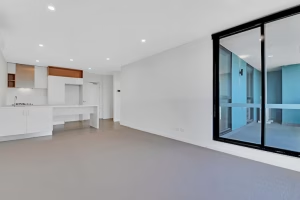Renovations are equal parts decisions and logistics. Homeowners want good design and reliable craft. They also want the job finished without chronic delays. The trick is to translate design decisions into a realistic timeline that accounts for municipal permits, trade availability, inspections, and finish-material lead times. In Edmonton, permit rules and code updates influence how you plan, so bring a municipal checklist into your schedule from day one.
This article walks you through the timeline stages, what typically slows projects in Edmonton, and how to build contingency into a plan that still moves. If you want, use this as the blueprint to discuss a timeline with a contractor or to build a project sheet for your own tracking.
Start by defining scope and priorities.
Before any dates make sense, decide what you want done and why. A clear scope prevents scope creep, which is the most common cause of schedule blowouts.
Practical work
- Write a brief that lists must-haves and nice-to-haves.
- Mark, which changes touch structure, plumbing, electrical, or HVAC. Those are the workstreams that usually need permits and inspections.
- Prioritize rooms and outcomes. Is this a single-room refresh, a basement conversion, or a whole-house project?
Local note: Edmonton’s secondary suite and renovation guidance shows which projects typically require development or building permits. If your plan includes a basement conversion or significant mechanical work, flag permits at the very start.
Build the master phases
Breaking the project into phases makes scheduling and communication simpler. Here’s a practical sequence you can adapt to most projects.
- Idea and brief.
- Feasibility and site review.
- Design and selections.
- Permit submissions and approvals.
- Pre-construction planning and procurement.
- Construction: demolition, rough-ins, inspections, finishes.
- Commissioning, snag list, and handover.
Each phase should be treated as a mini-project with deliverables. That reduces surprises and makes it easier to slot trades and inspections into the plan.
Feasibility and site review (don’t skip this)
A short site visit is cheap insurance. A contractor or designer who walks the house will spot hidden constraints that affect the timeline: buried structural members, outdated wiring, limited access for deliveries, or existing moisture problems.
Why this matters in Edmonton
Older homes in established neighbourhoods often have quirks that require additional inspections or engineering input. A feasibility check flags those early so you can order stamped drawings or specialist reports before construction begins.
Deliverable: a short feasibility memo that lists permit triggers, likely structural or mechanical complications, and realistic sequencing suggestions.
Design, documentation, and selections
Design is where intent becomes work. Provide designers with the brief and the feasibility memo so drawings reflect real constraints.
Key steps
- Produce permit-ready drawings when the scope affects structure, mechanical, or plumbing. Inspectors expect sufficient detail and will trigger extra reviews if drawings are unclear. nrc.canada.ca
- Lock major selections early: cabinetry footprints, plumbing rough-in locations, and major appliances. Late changes to these items often require rework or schedule pauses.
- Order long-lead items as soon as your drawings are frozen. Windows, specialty doors, and some finish items commonly have extended delivery times.
Tip: Keep an “allowance” list visible in the plan for items you haven’t chosen yet. This prevents decisions from blocking work in other areas while you finalize.
Permits, approvals, and how they affect the schedule
Permits are often the bottleneck that people underestimate. In Edmonton, building code revisions and municipal review practices mean you should allow time for approval cycles. The National Building Code – 2023 Alberta Edition is in effect and affects permit reviews for many renovation types. Alberta.ca
Practical schedule tips
- Submit permit drawings early in the timeline. Even when a permit is straightforward, municipal reviewers may request clarifications. Factor that back-and-forth into your timeline.
- If your work creates a new secondary suite or alters mechanical systems, consult the City of Edmonton’s guidance early. It reduces the chance of missing documentation that would restart a review. edmonton.ca
- Plan staged inspections into the construction schedule. Most trades require rough-in and final inspections. Do not cover work before the inspector signs off.
A permit-aware schedule treats municipal review as part of the critical path, not an afterthought.
Trade sequencing and inspections
Trades are the moving parts. The order they show up and the inspections they need determine a lot of the calendar.
Common trade flow for interior renovations
- Demolition and site protection.
- Structural alterations and engineered work.
- Plumbing and electrical rough-ins plus mechanical work.
- Inspections for rough work.
- Insulation, drywall, and secondary mechanical adjustments.
- Finishes, trim, cabinetry, and flooring.
- Final inspections and commissioning.
Practical note: In Edmonton and Alberta more broadly, electrical and plumbing work commonly requires trade permits and staged inspections. Coordinate your electrician and plumber so they call inspections when the municipality expects to see the work. That avoids covered work and rework.
Procurement and material lead times
Don’t treat material ordering as a single line item. Cabinets, specialty windows, engineered flooring, and custom doors often take longer than lights and paint.
How to protect the schedule
- Make a procurement plan that lists lead times next to each major item.
- Order long-lead items once drawings are permit-ready to avoid cancellations if drawings change.
- Agree with your contractor on a staging plan so materials arrive when needed and storage is arranged.
Practical example: homeowners who ordered cabinetry after the demo began often see delays while the cabinet shop waits for as-built dimensions. Lock cabinet design earlier to avoid that pause.
Real-world Edmonton example
A midtown Edmonton homeowner planned a main-floor renovation and wanted an open plan flow. An early feasibility visit revealed an original post supporting the floor above. The contractor arranged an engineer review while the design phase continued, which added an extra permit review but prevented an unplanned construction hold later. Because the engineering work was started early, the project kept momentum during permit review and finished without a mid-build interruption. The lesson: do hidden checks early and accept that some permit steps are part of a sound timeline.
This is the kind of site planning Steadfast Constructions Ltd. does during pre-construction reviews to keep projects on the planned critical path. Mentioning this early reduced surprises and kept inspection cycles predictable.
Building contingencies into your timeline
Good timelines include buffers. That does not mean padding is wasteful. It means practical contingency for common delays: permit clarification, trades running late, and material shipment issues.
Where to place contingency
- Permit review period and possible resubmissions.
- Trade handoffs where timing is tight.
- Delivery windows for long-lead items.
- Final snag and commissioning time.
A reasonable plan shows contingency explicitly so stakeholders know where the slack lives and how it will be spent if needed.
Communication and decision-making rules
A timeline fails when decisions are slow. Set rules for how decisions are made and documented.
Best practices
- Agree on a decision owner for each area of the project.
- Create a short weekly update protocol with the contractor: what was done, what is next, and what decisions are needed.
- Use simple shared tools: a cloud folder for photos and permits, and a one-page schedule that everyone can reference.
If you must make fast decisions, limit them to essentials and log the change promptly. This keeps the timeline honest and the team aligned.
When to bring in the contractor vs. manage yourself
Homeowners often wonder whether to hire a contractor early or late. Early contractor involvement usually speeds things up.
Why early contractor involvement helps
- Contractors spot permit triggers and sequencing issues during feasibility.
- They speed procurement and provide realistic trade schedules.
- They manage inspections and trade coordination so your timeline does not fragment.
Steadfast Constructions Ltd. offers pre-construction planning and permit coordination in Edmonton that helps translate design timelines into workable construction schedules.
Special case: Turning a basement into a home theatre
If your timeline includes a basement home theatre conversion, add specific steps: moisture checks, egress reviews, acoustic isolation, HVAC adjustments, and dedicated AV infrastructure. Basements often require extra mechanical work and permit attention when electrical or structural changes are involved. Plan the AV infrastructure early so conduit and power are roughed in with other trades.
Practical sequence for a basement theatre
- Feasibility and moisture audit.
- Acoustic and mechanical plan with permit-ready notes.
- Electrical subpanel or dedicated circuits roughed in.
- Isolation, insulation, and rough-in inspections.
- Finishes and AV commissioning.
This special case is why a project-aware timeline matters: the theatre’s equipment and performance depend on correct sequencing.
Local market context and timeline implications
Contractor availability and material lead times change with market cycles. Canada’s Residential Renovation Price Index and housing reports show renovation activity trends that affect lead times and scheduling. Recent RRPI releases have tracked price movement and regional variations that influence contractor schedules; pay attention to regional reports when planning. www23.statcan.gc.ca
City and federal policy shifts that encourage in-place improvements, like secondary suites, also raise demand for renovation resources in certain regions. This is another reason to lock a timeline early and engage a contractor familiar with local permit flows. cmhc-schl.gc.ca
Handover, warranties, and aftercare
The last phase deserves real attention. Include time for final testing, snag lists, and handover documentation. A contractor should provide a final folder with permits, inspection signatures, and warranty details.
Ask for
- A signed snag list with completion targets.
- Operation manuals for new systems and appliances.
- Warranty documentation and maintenance advice.
Steadfast Constructions Ltd. includes closeout packages for Edmonton projects so homeowners have a single source for future reference.
A simple timeline template (use as a checklist)
Use this template to build your project schedule. Replace placeholders with actual dates once you have contractor input.
- Phase 1: Brief and feasibility review.
- Phase 2: Design and selections.
- Phase 3: Permit submission and review.
- Phase 4: Procurement of long-lead items.
- Phase 5: Demolition and structural work.
- Phase 6: Mechanical, electrical, and plumbing rough-ins.
- Phase 7: Inspections and corrections.
- Phase 8: Finishes, cabinetry, and flooring.
- Phase 9: Final inspections, commissioning, and handover.
Use a shared calendar to track inspection bookings and delivery windows. It keeps everyone honest.
Conclusion
Learning how to plan a home renovation timeline in Edmonton is mainly about seeing the invisible steps: feasibility checks, permit reviews, trade sequencing, and procurement. Build the master phases, involve a contractor early, and use a shared one-page schedule with contingency pockets for permit clarifications and delivery delays. If you prefer less guesswork, Steadfast Constructions Ltd. provides pre-construction planning, permit coordination, and full project management across Edmonton. Contact Steadfast Constructions Ltd. to schedule a feasibility review and get a contractor-aligned timeline you can actually trust.
Frequently Asked Questions (FAQs)
Q1: What is the first step when I want to plan a home renovation timeline?
A1: Start with a defined brief and a short feasibility review. Flag any structural, plumbing, electrical, or mechanical work early because those items usually trigger permits and inspections that affect the schedule.
Q2: How do permits affect my renovation timeline in Edmonton?
A2: Permits introduce review cycles and staged inspections. Submit permit-ready drawings early and allow time for municipal clarifications. In Edmonton, certain renovations such as basement suites and major mechanical or electrical changes commonly require permits.
Q3: When should I order long-lead items during my renovation?
A3: Order long-lead items once your design is frozen and permit-ready. That prevents redesigns from canceling orders and keeps material delivery aligned with construction stages.
Q4: How much contingency should I include in a renovation timeline?
A4: Include contingency around permit reviews, trade handoffs, and material delivery windows. Contingency should be explicit in the schedule so everyone understands where the slack is and how it will be used.
Q5: Should I hire a contractor early to help build the timeline?
A5: Yes. Hiring a contractor early helps identify permit triggers, provides realistic trade sequencing, and speeds procurement. Contractors who offer pre-construction planning and permit coordination reduce the risk of mid-build delays. Steadfast Constructions Ltd. offers these services across Edmonton.







